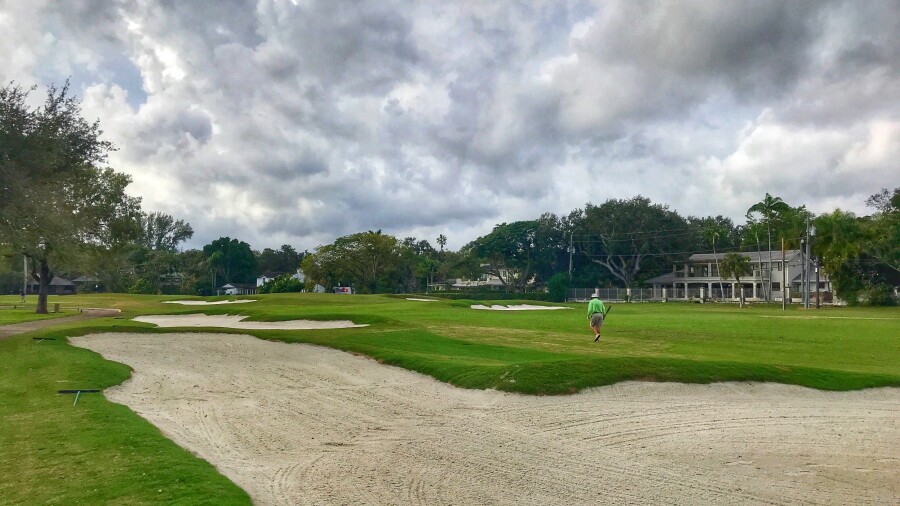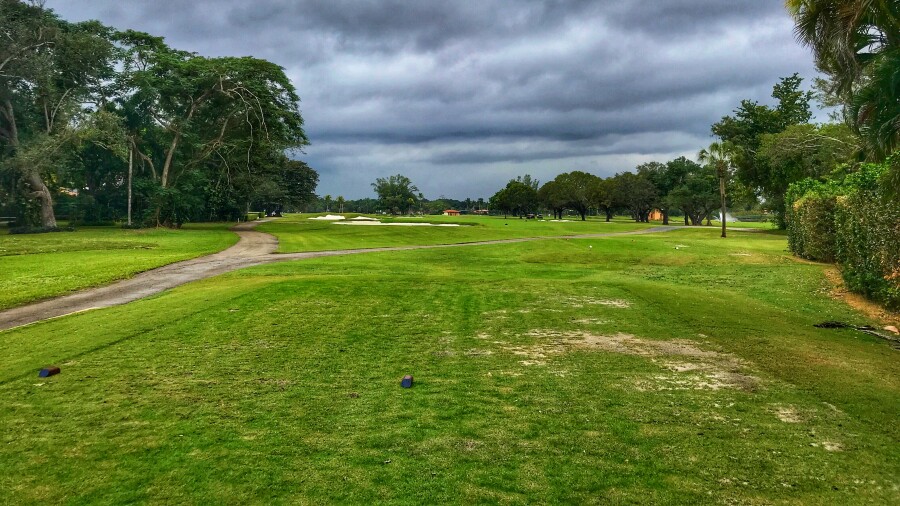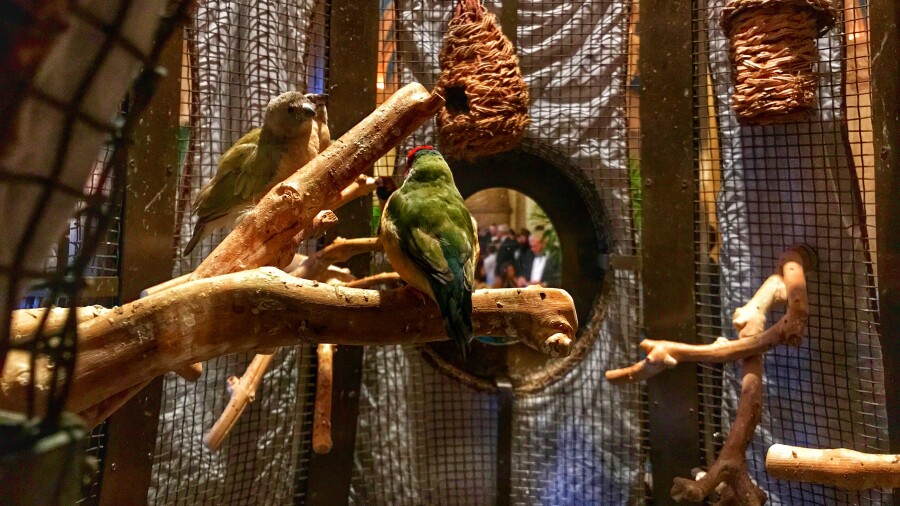Water is wet, and South Florida is flat. This is one reason why there are so few genuine standout courses in the Sunshine State. Give a golf course architect interesting terrain and he or she can find an interesting routing and compelling holes. But on flat ground, the architect must create variety and strategy.
Fairway bunkering takes on particular importance on flat sites. On rolling or hilly courses, uneven lies and the general character of the terrain can often stand in for the strategic challenge that fairway bunkering poses. Ross’ Orchards Golf Club north of Springfield, Massachusetts is quite light on fairway bunkers, for example. Its fairways drift and bend with the terrain; it simply doesn't need as much sand to pose a threat off the tee.
At Biltmore Golf Course ($120 for Coral Gables residents; $180 for hotel guests; $280 for outside rounds) on the site of one of Miami's premier hotels, Brian Silva, an expert on Ross’ work, has restored the course in two stages in the past decade-plus. In 2007, Silva and his team restored the course more or less by feel:
“In 2007, greens were cored out and rebuilt to USGA specs and restored to former sizes/shapes as suggested by the original green fill pads. About a dozen and a half fairway bunkers were restored - these bunkers had been taken out of play merely by allowing the Bermuda to grow over the previous sand floors. Some of these bunkers are very unique - the berm on the green side can be up to 8 to 10 feet higher than the bunker floor. The 2007 restoration merely cut the grass out of the former sand floor and we hit sand doing this. Existing bunkers were also renovated at this time.”
This effort restored the majority of Ross’ intent to the Biltmore course, but without the actual plans handy, Silva and the course’s overseers could not be sure. So when Biltmore Director of Golf Bob Coman found them at the Tufts Archives in Pinehurst, which houses a massive collection of Ross-related documents, the final piece of the puzzle of Biltmore’s revival fell into place.
The plan, according to Silva, “suggested additional bunkers - especially fairway bunkers - that had not been restored in 2007. These bunkers worked with already in place bunkers to give the fairways a unique degree of 'flow' and movement as fairways sinewed their way from tee to green.”
This idea of “flow” is key to making a flat golf course strategically interesting. The way the fairway bunkers – more than a dozen reclaimed in the 2018 restoration – bite into the fairways at key points makes Biltmore an interesting test off the tee, even in the absence of elevation change. Whether to lay up short of, hit up alongside or attempt to fly a fairway bunker is a constant concern, and it rightly punishes golfers who indiscriminately wail away with driver off the tee.
The greens at Biltmore also received some extra attention this time around, especially on the back nine. On the 14th, the course’s shortest par 3, Silva restored a “thumbprint” depression in the back of the green that separates it into rear-left and rear-right sections. This makes a relatively large putting surface play smaller, especially for the player intent on attacking a back pin. Finally, at the par-5 18th Silva restored one of Old Florida’s boldest greens, which, at 10,000 square feet, features high-right and low-left sections that can house either inviting or downright diabolical hole locations, depending on the pin-setter’s mood. This and other varied greens make Biltmore worth playing multiple times if you’re in town.
The golf course renovation is part of a subtle strategic shift on the part of the hotel. “We want to become known as a golf destination,” said Philippe Parodi, The Biltmore’s Vice President of Marketing. In a golf travel market where multi-course facilities are king, Biltmore makes a strong argument for the value of getting to know a single course over multiple rounds. The hotel has begun promoting packages aimed at the golf traveler.
A South Florida splurge
Miami is known as a place to spend money, and The Biltmore experience is certainly toward the “luxury” end of the resort spectrum, especially for foodies. The hotel has a greater culinary focus than most resorts I’ve visited. There’s Palme d’Or, a AAA Five-Diamond restaurant helmed by Gregory Pugin, a classically-trained French chef whose résumé includes a stint at the famous Le Cirque restaurant in New York. My dinner there included caviar, foie gras and A5 Kobe beef, as well as a chocolate dessert sculpture shaped like a tree, with a comically large tangle of cotton candy on top.
Then there’s Sunday Brunch at Fontana, one of the most over-the-top examples of its kind. At almost $100 per person, it is a special-occasion-type indulgence, but between the bottomless mimosas, as well as an open bar with other drinks, caviar, truffle-topped eggs Benedict, a raw bar, multiple carving stations and a fine selection of desserts, it might actually be a value at that price.
Coinciding with the reopening of the golf course, The Biltmore debuted all-refreshed rooms in December, the culmination of a $25 million dollar enhancement project. Golfers who appreciate Old World extravagance should be excited.




























